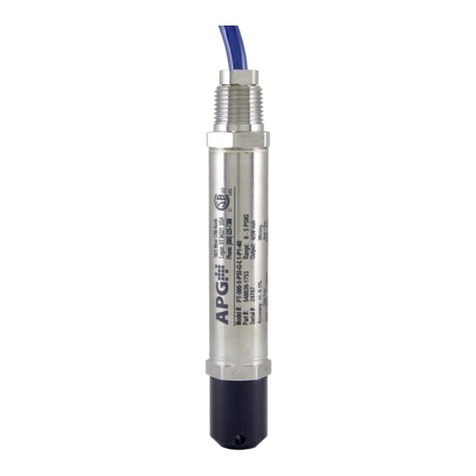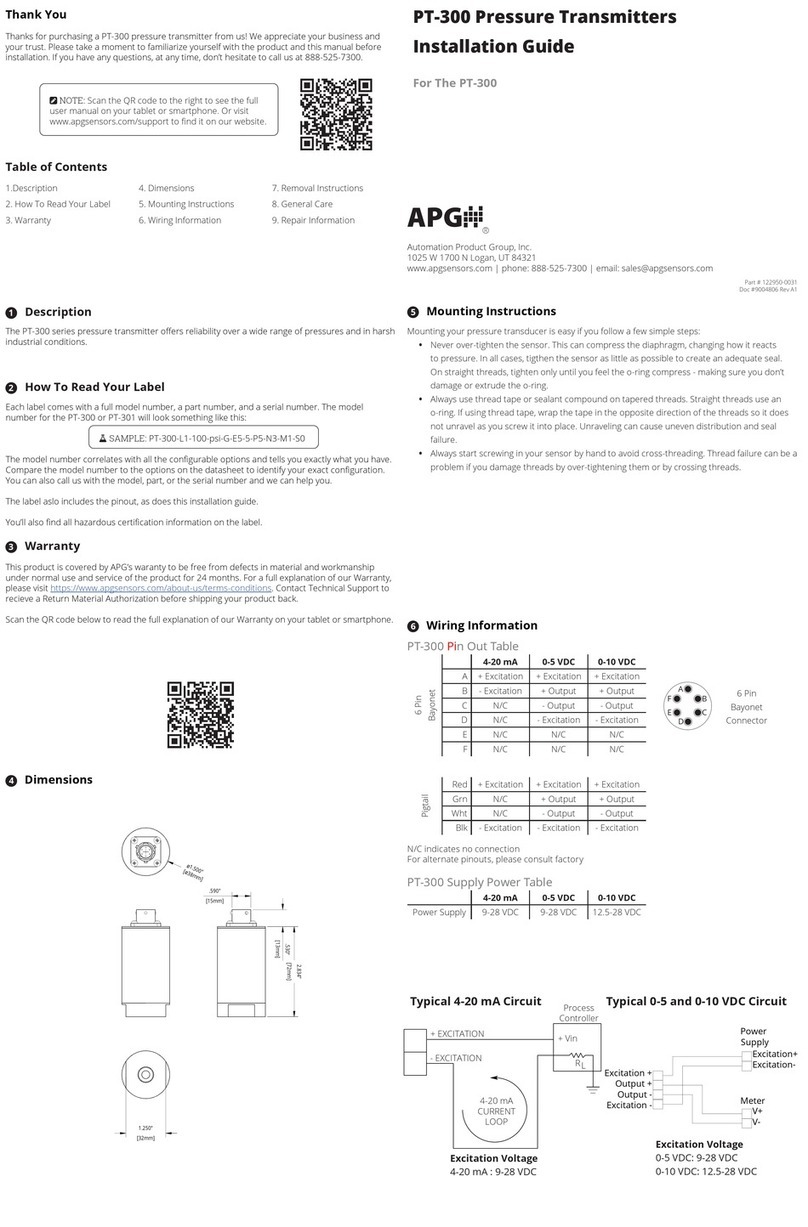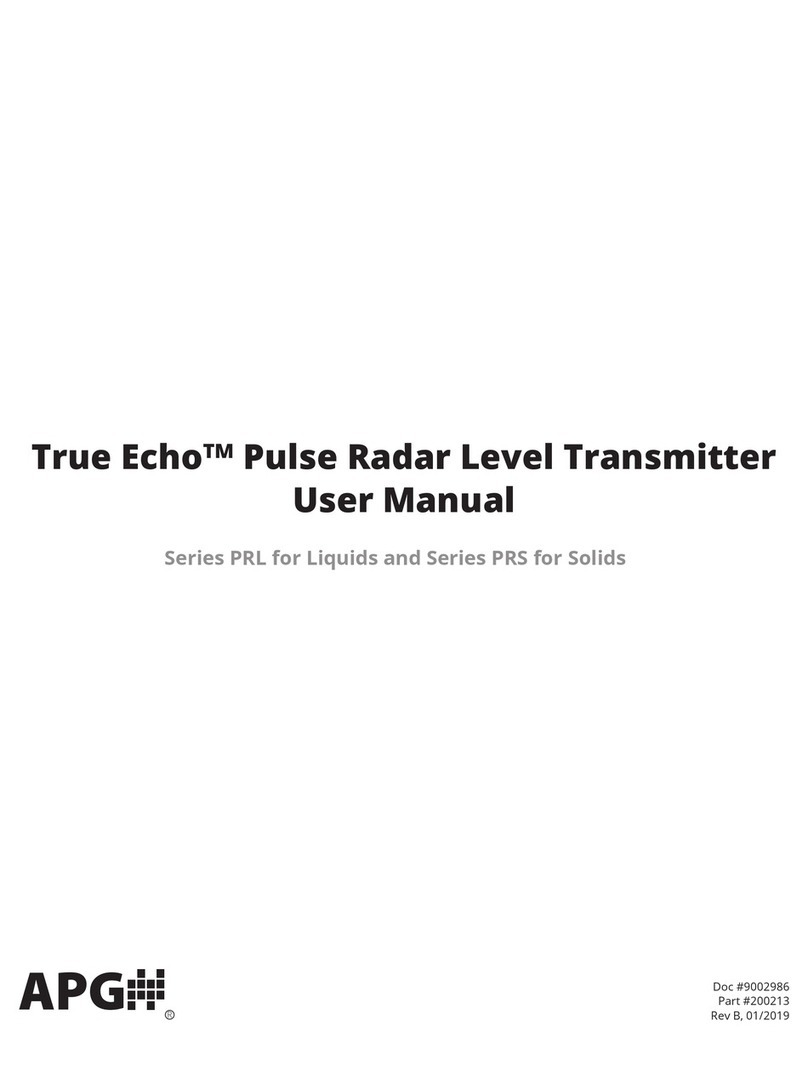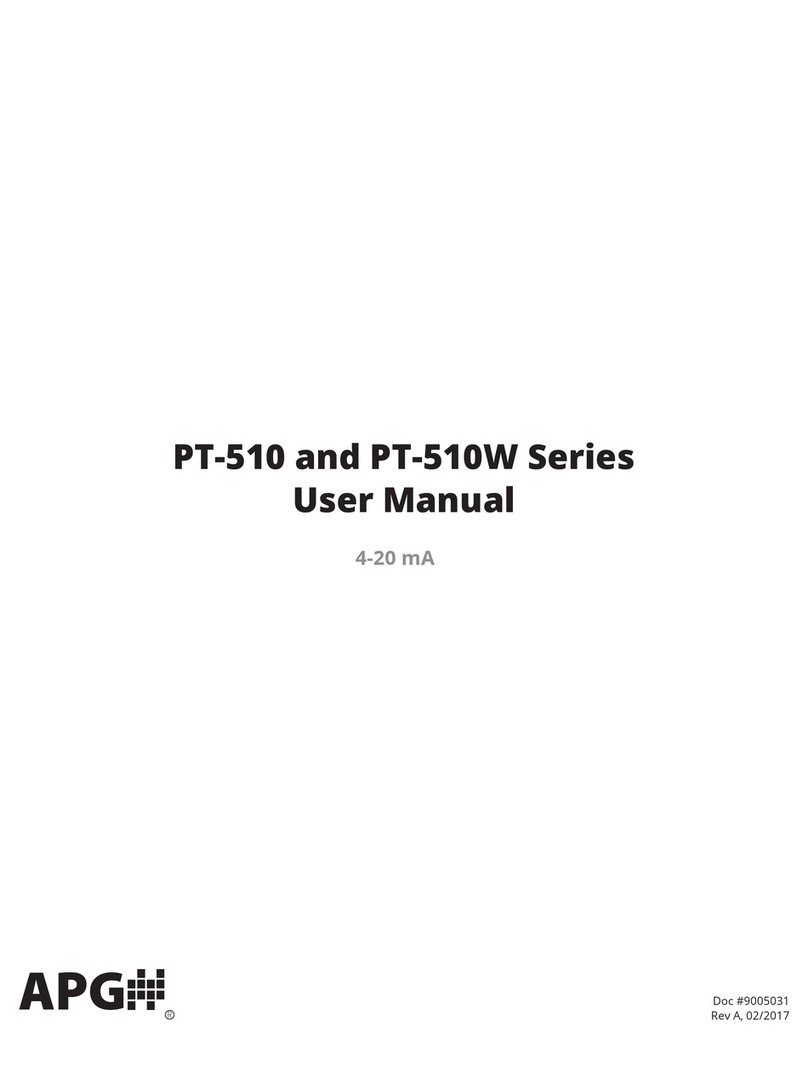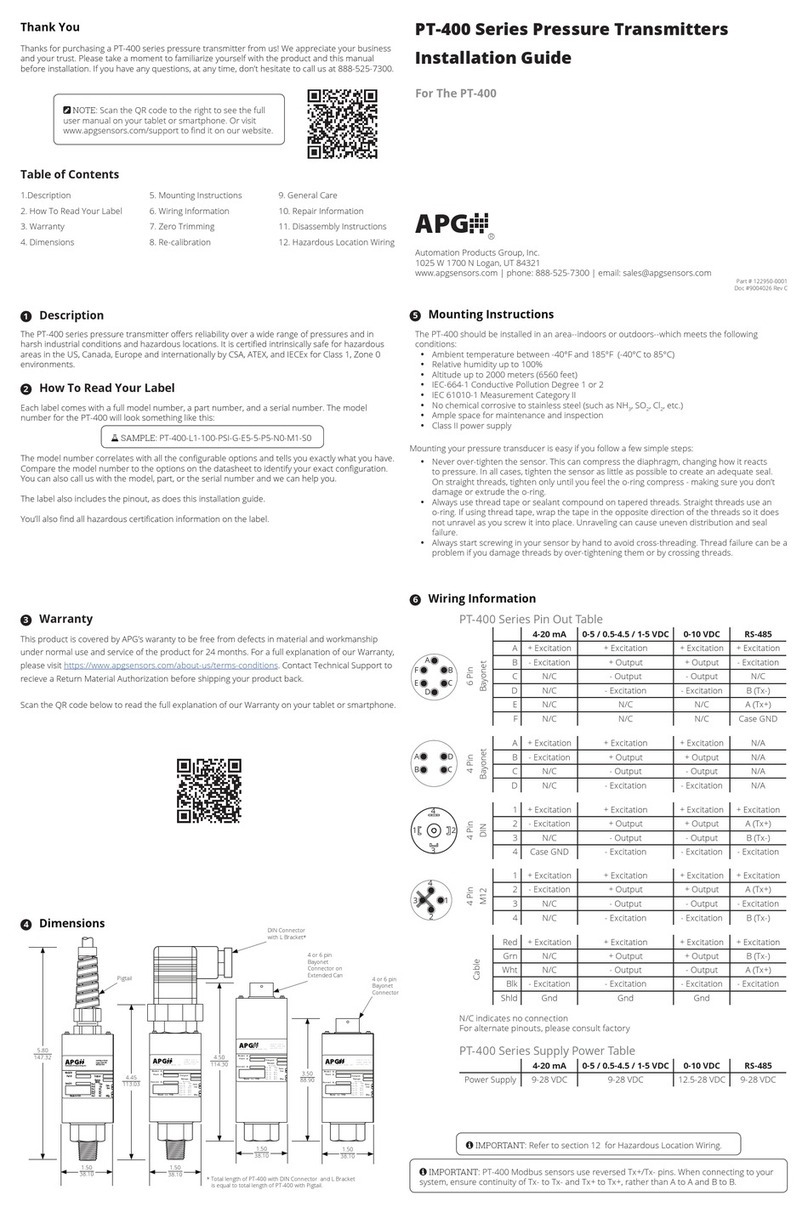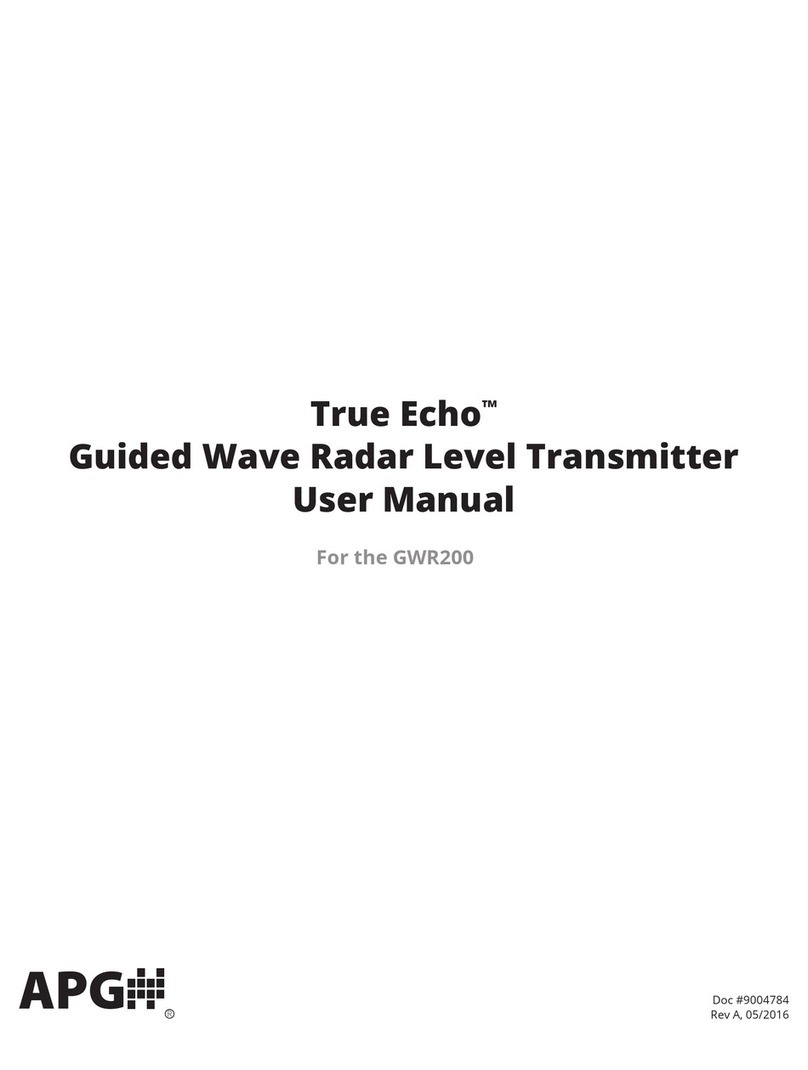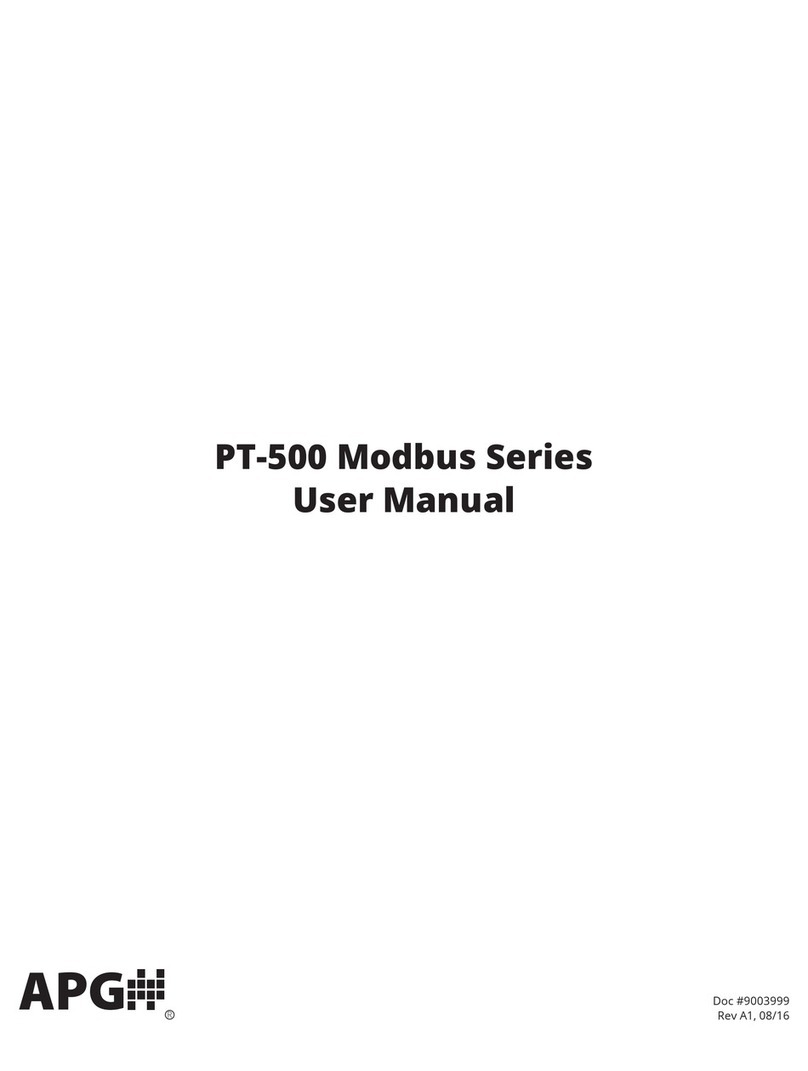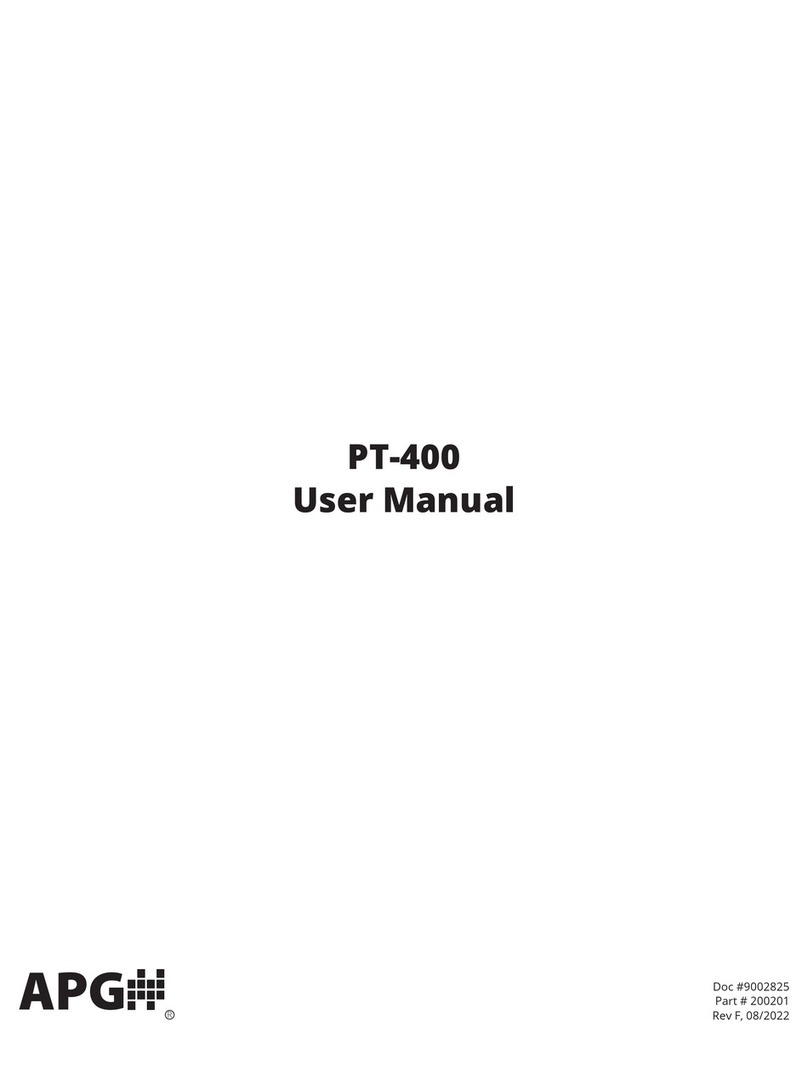
iii
Introduction
Thank you for purchasing a PT-500 Analog Output series submersible pressure transmitter from APG.
We appreciate your business! Please take a few minutes to familiarize yourself with your PT-500 and this
manual.
PT-500 submersible pressure transmitters oer reliability in harsh industrial conditions and hazardous
locations. The 4-20 mA model is certied intrinsically safe for hazardous areas in the US and Canada
by CSA for Class I, Division 2, Groups C and D, Class I, Zone 2, Group IIB, and Class I, Division 1, Groups
C and D, Class I, Zone 0, Group IIB environments. The small size, integrated electronics, wide operating
temperature range, and durability make the PT-500 the perfect instrument for static and dynamic pressure
measurement.
Reading your label
Every APG instrument comes with a label that includes the instrument’s model number, part number, serial
number, and a wiring pinout table. Please ensure that the part number and pinout table on your label
match your order. The following electrical ratings and approvals are also listed on the label. Please refer to
the Certicate of Compliance at the back of this manual for further details.
IMPORTANT: Your 4-20 mA PT-500 MUST be installed according to drawing 9002803
(Intrinsically Safe Wiring Diagram or Non-Incendive Wiring Diagram) as indicated above to
meet listed approvals. Faulty installation will invalidate all safety approvals and ratings.
Electrical ratings
Input: 10 to 28 Volts DC; Output: 4-20 mA
Exia Class I, Division 2; Groups C, D T4
Class I, Zone 2, Group IIB
AEx nC IIB T4: Ta: -40°C to 85°C
Ex nL IIB T4: Ta: -40°C to 85°C
Maximum Working Pressure: 10,000 PSI
Vmax Ui= 28VDC, Imax Ii = 110mA, Pmax Pi = 0.77W, Ci = 0μF, Li = 0μH
Install in accordance with drawing 9002803, sheet 2 (page 9).
Input: 9 to 28 Volts DC; Output: 4-20mA
Exia Class I, Division 1; Groups C, D T4
Class I, Zone 0, Group IIB
AEx ia IIB T4: Ta: -40°C to 85°C
Ex ia IIB T4: Ta: -40°C to 85°C
Maxium Working Pressure: 10,000 PSI
Vmax Ui= 28VDC, Imax Ii = 110mA, Pmax Pi = 0.77W, Ci = 0.042μF, Li = 0.320μH
Install in accordance with drawing 9002803, sheet 1 (page 8).
